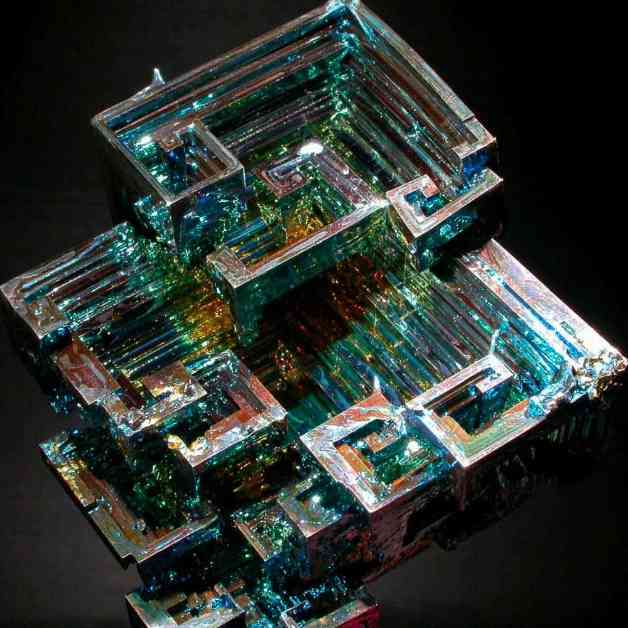Bismuth crystals have been captivating collectors and artists alike with their stunning beauty and unique properties. While bismuth occurs naturally in the Earth’s crust, the mesmerizing crystals that are often seen are usually produced through a controlled cooling process in a laboratory.
Bismuth, a brittle metal with a silvery-white color, is found in the earth’s crust as a byproduct of mining other metals like lead, copper, and tin. It is relatively rare and has limited applications, mainly in pharmaceuticals like Pepto-Bismol and Kaopectate. However, its use in these medicines is declining.
The crystal structure of bismuth is quite remarkable, forming rhombohedral crystals that give rise to the characteristic stair-step geometry. This unique structure is a result of the atomic arrangement within the crystal and the specific conditions under which it forms.
Artists have taken advantage of this unique property to create intricate bismuth crystal sculptures by carefully controlling the cooling process. This fusion of science and art highlights the natural beauty of bismuth in a creative and expressive way.
One of the most notable properties of bismuth crystals is their iridescence, where the surface appears to change color when viewed from different angles. This phenomenon is caused by the interference of light waves reflecting off the thin oxide layer on the crystal’s surface, resulting in a shifting rainbow-like effect.
Despite its beauty and unique properties, bismuth is non-toxic and poses minimal risks to the environment. This makes it an attractive alternative in applications where toxicity is a concern, such as lead-free solder and non-toxic ammunition, as well as a safe crystal to have.
For those interested in learning more about bismuth and its geological and physical properties, further exploration is recommended. Additionally, if you want to try making your own bismuth crystals, detailed guides are available to help you get started on this fascinating journey.

